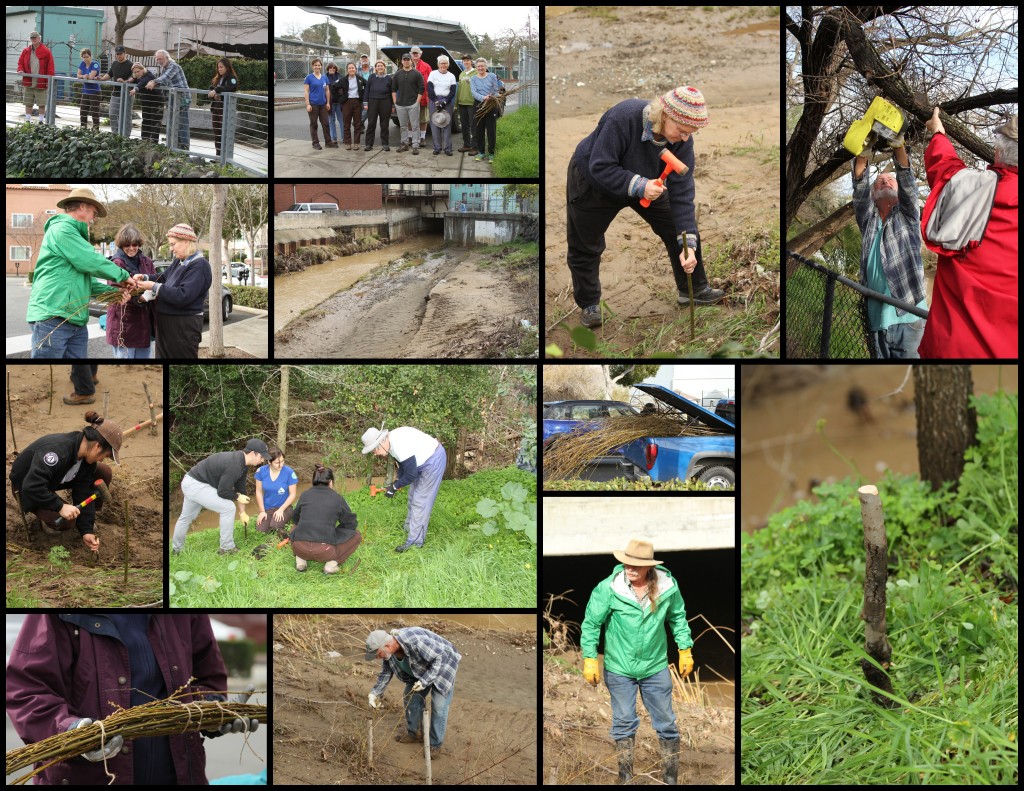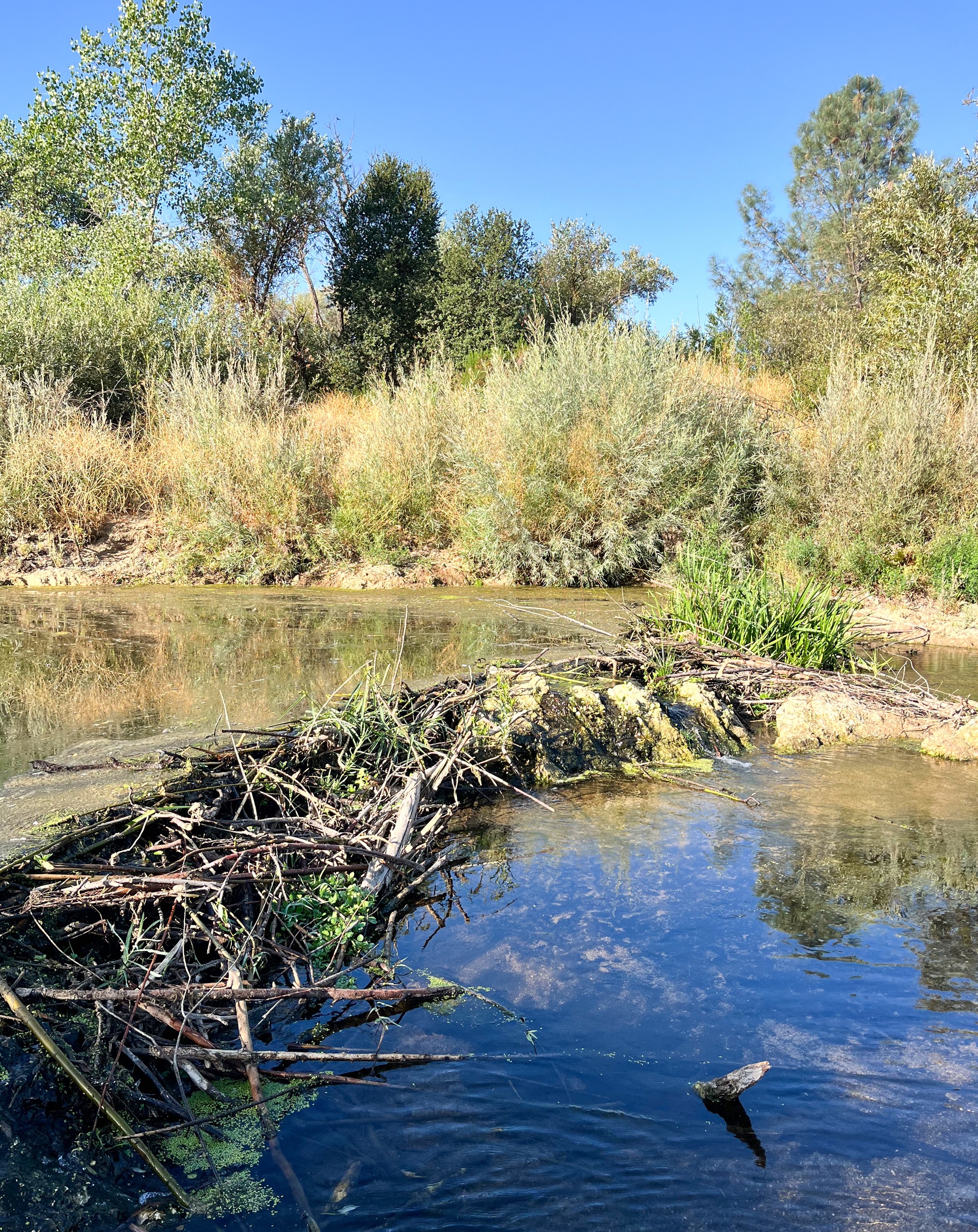This was good news to read from our friends down south.
Dam it up: North County cities are using man-made and natural beaver dams to control erosion and fire in the Salinas Riverbed
According to SLO Beaver Brigade Founder Audrey Taub, the family of beavers that reside in this area is one of four in Atascadero. They maintain two dams that span the width of the riverbed holding up to 3 feet of water that slowly flows for about a mile, to which Taub named them “ecosystem engineers.”
Even in times of drought, these beaver-inhabited areas remain wet year-round and provide a resource that humans have historically tried to engineer for fire prevention, water retention, and species conservation, said Taub, whose group monitors the activity in the area.
Both Atascadero and Paso Robles are using beaver engineering to help reintroduce the amphibious rodents to the area and allow the animals to maintain a lush Salinas Riverbed by doing what they do best—being beavers.
On Aug. 26 Paso Robles notified residents of a riverbed project to harvest willow stakes to enhance environmental health and water quality in the Upper Salinas River corridor starting in October. Its purpose: to build man-made beaver dams in Atascadero.
Wow convincing their RCD to make BDAS with beavers in mind is a great! Good work Beaver Brigade at securing recruits!
I was a little worried about the phrase “Willow Stake Harvesting” because I think its the wrong time of year for that if you want them to grow. Remember once upon a time we were lucky enough to work with Waterboard Guru Ann Riley and she did a great training and teaching about willow cuttings in Martinez.
Planting Swords into Plowshares – Willow Version
14 people showed up from Martinez, Napa, and Oakland and Berkeley to put some magical willow cuttings in the banks of Alhambra Creek. (I say magical because at the right time of year willow can be cut from trees and turned back into trees. Imagine that!) Creek restoration expert Ann Riley from the SF waterboard is always an outstanding teacher and Friends of Alhambra Creek Volunteers turned out to hear what she would say.

Okay not the right time to use willow stakes to grow things but hey if you just want them to weave between the posts, that’s different.
Willow stake harvesting involves trimming live willows and replanting those pieces along unstable riverbeds. The willow stakes eventually form a new root structure and provide soil stability, preventing further erosion along the bed.
Upper Salinas-Las Tablas Resource Conservation District (RCD) Executive Director Devin Best helped spearhead this project and is currently working on engineering beaver dam analogs—human-made dams that mimic beaver activity.
“[Analogs] just seems kind of the path of least resistance on some level, and also has real potential to kind of change the way that we’re addressing species decline, climate change, landowner resiliency, and all these other concerns that we’re trying to deal with on a large scale,” Best said. “But a much more strategic and effective method.”
I still a a little worried about timing. But It’s great to read you have SUCH support from the RCD,
 With funding from the county, and a partnership with the California Conservation Corps, the organizations will collect willow stakes within the Salinas River in Paso and transport them to the Atascadero area to assist with erosion issues.
With funding from the county, and a partnership with the California Conservation Corps, the organizations will collect willow stakes within the Salinas River in Paso and transport them to the Atascadero area to assist with erosion issues.
The project started when SLO County contacted the RCD about a quick fix for some erosion near a pipeline on private land near the Upper Salinas Riverbed. When Best assessed the land, he determined that process-based restoration was the solution, a low-technology strategy that mimics nature and eventually could involve beavers.
“One of the elements of process-based restoration is using beaver dam analogs because they replicate natural stream channel morphology and processes to help reduce sediment and increase water retention, and actually do some flooding, which is a good thing that you want to see when they hold water during certain events of the year,” Best said.
He said they hope to encourage vegetation growth where none currently exists.
“By incorporating some willows in there and keeping them alive, we hope to restore the riparian corridor as well as maybe find some beavers that might move back into that area,” he said.
Well that’s what we like to hear. Good work brigade!
Best said the implementation of the beaver dam analogs may involve some trial and error, but that’s the nature of process-based restorations.
“The concern is, are these things going to work and are they going to be successful? And it’s like, well, you have to start to find out what works and what doesn’t work,” he said. “So I’m happy to be sort of that risk taker and at the forefront of … the early adoption of these things here locally.”
Willow stake harvesting in Paso Robles is scheduled to begin at the end of September, and construction of the Atascadero dams between Oct. 1 and 15. Δ
Great attitude. I wish you beavers.






































